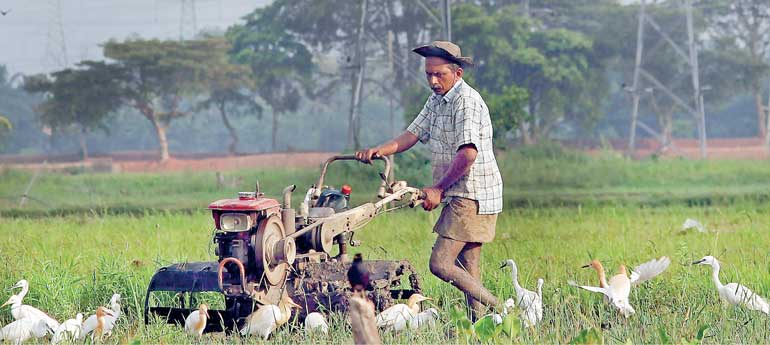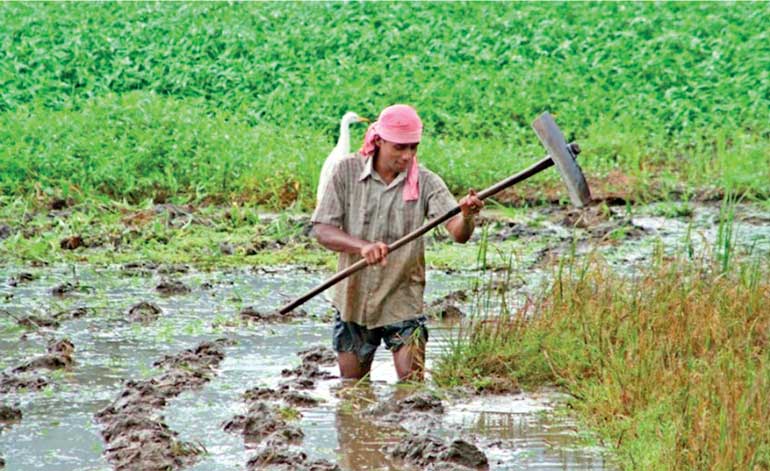Saturday Nov 29, 2025
Saturday Nov 29, 2025
Wednesday, 14 February 2018 00:00 - - {{hitsCtrl.values.hits}}


 Yahapalanaya has moved from Royal debacles to a right Royal debacle, soundly defeated by the former presidents’ party SLPP at the recently concluded local elections for municipal councils, urban councils and divisional councils.
Yahapalanaya has moved from Royal debacles to a right Royal debacle, soundly defeated by the former presidents’ party SLPP at the recently concluded local elections for municipal councils, urban councils and divisional councils.
As per the final results, the statistics are as follows:
Despite getting the ok from the people in 2015, the Government, due to its narrow parochial interests of a few, moved from one disaster to another in its three-year rule. The result of this election is a clear and comprehensive statement of the masses and a rejection of the past three years’ rule strewn with many misdeeds and failings. An in-depth analysis of the last three years’ rule reveals the following:
It now appears that UPFA/SLFP is the biggest loser in this election and not UNP, even though the key decisions and appointment of personnel to key positions were probably not done with the President’s approval. Some fiascos that adorned the print and electronic media as well as the peoples’ minds were,
On top of that was the drought that played havoc with the farmer community, pushing them deeper into poverty. At present, nearly 30% of our population are into farming even though their GDP contribution is quite low.
As per the Central Bank data, the 2016 contribution to GDP was 7.1% and has been falling steadily from 12.1% in 2006. The poll results in the agriculture areas are clear manifestations of the disapproval of the agriculture policies of this Government too, and a jolt to the Government to wake up and take notice of what the people are saying about them. In this situation, can the President turn the fortunes of farmers and consumers around?
After diverting the Mahaweli River and providing water for farming in the North Central and Eastern Provinces, successive governments failed to give due preference to farmers. While adulating and heaping accolades on others in other fields, the farmers who feed us and keep us alive were disregarded.
President Maithripala Sirisena on 6 October, 2017 on the occasion of the National Vap Mangul Ceremony, while launching the National Food Production Campaign, called upon the people to shed differences and venture into growing more rice, vegetables, fruits, and other alternative food crops. Our short-sighted land policies which saw vast swathes of paddy and coconut lands being used for housing projects, was identified as one of the main causes for food shortage.
Last year, it was a drought in the paddy and vegetable growing areas that resulted in huge shortfall in paddy harvest, forcing the Government to import rice. Vegetable prices skyrocketed, with most vegetables priced over Rs. 60-80 for just 250 grams and it continues to be so even today. Coconuts have gone up in price, forcing consumers to buy half a coconut at times.
On the other hand, during better days, the farmers were often put into great difficulty with having to line up for days with their vehicles to sell paddy to PMB. Another extremely sad revelation in the print and electronic media was the occasions where paddy was rotting in government stores worth billions of rupees.
Also a newspaper report on 2 September, 2015 stated that in Vavuniya, a kilo of red onions was just Rs. 30 and yet the farmers could not find buyers due to a glut in production.
In the MPI (Multidimensional Poverty Index) Sri Lanka ranks high (number one) and on par with Maldives for 2016 (http://www.ophi.org.uk). In the HDI (Human Development Index) also Sri Lanka ranks 73rd, highest in South Asia. Yet there is inequality in distribution of income and the rural sector is the most effected (http://www.ips.lk/talkingeconomics).
The strategies explained here is a means to improve the distribution of income and where the farming community of nearly 30% will have a higher income and better living standards.
The global escalation of commodity prices in the latter part of the last decade impacted Sri Lanka’s rice market with retail prices showing sharp increases for the consumer. The regulatory forces with ceiling on consumer prices and guaranteed price for paddy did alleviate this problem to some extent. The long drought and the subsequent floods impacted paddy cultivation. Also this highlights the need to augment the water retaining capacity of lakes by de-silting the lakes so that more rain water could be retained. Despite various plans to even export rice, the farmers who are the primary producers are not able to get even the guaranteed price for their paddy.
In the vegetable sector too problems are brewing with farmers not being able to sell their produce even at rock bottom prices and having to dump truck loads of vegetables in garbage dumps. On the other side consumers are forced to dish out more and more money for the daily essentials.
Nature too has not been kind to us. In early 2014, we experienced drought conditions in paddy and vegetable growing areas with tanks drying up. This was followed immediately afterwards by incessant rains causing heavy floods which wiped out a huge quantity of paddy which was held in storage with the farmers. Then in 2017 came the drought again in the growing areas.
Indeed, in 2015 a local TV channel in their evening news gave an insight into how officials are flouting the guaranteed price, in this case for onions with the connivance of certain unscrupulous traders depriving the farmer of his just income. In late 2014, the potato farmers went up in arms in Welimada. TV footages showed how angry farmers thronged the premises of authorities demanding a better price for their produce. The drought in 2017 dealt a severe blow to paddy and vegetable production as well as coconut cultivation. We have this happening time and time again, one day it is the tomato famer then next the potato farmer and so on. But the problem becomes very acute due to the absence of a food security policy and empowering the farmer to own the value chain of rice and vegetables from farm gate to consumer. Thus, it is evident that Sri Lanka is in need of a mechanism to develop the market for agricultural products in a sustainable manner, free from the clutches of officials and politicians.
Underpinning the failings of these sectors are a range of issues emanating from the limitation on storage for paddy procured at guaranteed price, a sustainable return for the farmers and the inefficiencies and inequalities in the current system. Thus, the future calls for a process from the field to the plate on the table where the influencers and the beneficiaries are the actual stakeholders.
Strategic analysis of the problem therefore needs to look at both the current situation as well as look to the best international practices in order to devise a new and better strategic direction for the future.
This article sets out to define the problems of the industry with the main focus on rice in order to arrive at a possible solution and in no way claim to be the definitive solution. Indeed, the proposed solution is no stranger to this country. Multinational companies who are engaged in paddy cultivation in Sri Lanka already practice these strategies from cultivation to processing, packaging, branding and marketing the branded end product. The farmers of this nation who are citizens surely must have a better say than the foreign multinational companies. Similar strategies can be implemented in the vegetable and other perishable sectors. It only sets out to contribute to a paradigm shift in the thinking and policy development in the agricultural sector.
Nearly 30% of the population of Sri Lanka are involved in farming with the majority of them engaged in rice farming. The farming community in the country is primarily from the poorer segment of society. As an economically-disadvantaged group, they lack effective organisation, leadership skills, and representation at a political level. The lack of strength and effective voice means the community is dependent on others, many of whom have different agendas and interests.
With an economy so dependent on the rice crop, to ignore the needs for proper, fair, and equitable support and policies for the farming community is to endanger the very stability of society and adds further trouble to an already economically challenged country. What is needed is a bottom-up approach to planning, rather than the traditional incumbent of a top-down system. This is true of the sector irrespective of the geographical location within the country. Leadership from within needs to be developed, coerced, and encouraged.
Technology brings major change to farming – some good for the farmers and some not-so-good. Recent studies demonstrate that with the rupee depreciation, rising fuel costs, increasing labour costs, the charges and levies have increased to such an extent that many farmers may consider if they should remain in paddy cultivation unless the returns are worthy of their efforts. Implementation of policies that are beneficial to the stakeholders are thus an immediate need to support and enhance the sector.
The needs and wants of the rice-oriented farming community are not insurmountable and pose no major challenges to the authorities. They include;
The needs and requirements in the sector identified here are based on the degree of influence these issues have on the life of the farmer. Collectively these have the highest impact on the daily life and the future of the farmer.
The other critical issue in the farming community is one of ownership and participation in the value chain. The commerce of rice farming spans a range of activities from sowing to harvesting and milling, packaging, branding to distribution and marketing. The value addition in this chain happens at procurement to milling, stocking to distribution and marketing. The farmer’s benefits are only at the bottom of the value chain with little opportunity to optimise. The major millers on the other hand, benefit enormously with the ownership of the high end of the value chain thus making them the real beneficiaries in the sector.
Other countries with similar legacy problems for the farming community, for example the butter producers in Ireland, have addressed this challenge by forming co-ops where the farming community takes the ownership of creating the value addition. In the case of Ireland and their butter industry, it resulted in the creation of the world-famous Kerrygold brand under a farming co-op in 1962.
This initiative saw a sudden stop in export of unblended butter to UK where it had been traditionally sent. The economic benefit not just to the Irish farmer but to all stakeholders was very substantial even to this day.
Closer, in our own country we have witnessed this in our tea industry. Between 1971 and 1974, I worked as a planter for a British agency house in an estate in Agarapathana and later in Galaha. Here, what I witnessed was the fact that the greater percentage of black tea was being shipped to London for London auctions.
For all our efforts, even for the premium teas like BOP and BOPF we received only a little more than two rupees a pound. Also most of our premium teas were subsequently shipped back to us as branded packed teas at four to five times the price we got for bulk teas.
However, in later years with the nationalisation of tea estates, bulk teas were sold only at Colombo auctions. Today, the benefits accrued to Sri Lanka are clearly evident to all. The challenge in Sri Lanka is whether such an approach can be developed for rice and vegetable sectors and, if so, who will lead and drive the initiative?
Sri Lanka’s rice sector SWOT analysis
Strengths
Weaknesses
Opportunities
Ensure steady income even after having sold the paddy stocks
Threats
Goal
Achieve independence, acquire authority and influence in the production and processing of paddy and marketing, distribution and revenue optimisation of rice and rice products.
Assumptions
Overall objective
Develop industry co-ops or public companies where the ownership is by the farmer at regional levels based on growing areas. Such structures will manage the affairs of purchasing, processing, and marketing, bringing a ROI to all stakeholders.
It will benefit the Government too by enabling the sector to become self-reliant and increasing the attractiveness of farming. In a wider sphere, it will contribute to national growth and better wealth distribution.
(The second part of this article can be read here. The writer can be reached at [email protected] or [email protected])